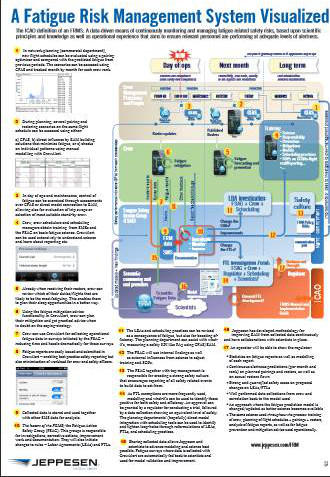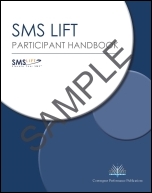Source RotorCraftPro jhadmin posted on January 09, 2014 09:08
IHST Knows Why Helicopter Accidents are Happening; It’s Now Trying to Stop Them
Author: James Careless
In its quest to bring the global helicopter accident rate to zero, the International Helicopter Safety Team (IHST) has analyzed more than 1,000 U.S. civil helicopter accidents and their causes. Having done so, the IHST’s investigators have come to two clear conclusions: (1) Helicopter accidents are ultimately caused by incorrect human decisions, and (2) the evidence shows that reducing the accident rate to zero is actually possible.
“After going through the NTSB investigations in detail, one thing has become obvious: No one has invented a new way to crash a helicopter,” says Matt Zuccaro, IHST co-chair and president of Helicopter Association International. “The reasons helicopters crashed ten years ago remain the same today, and all of their causes can be traced back to the people who flew, serviced, or managed the helicopters.”
The Main Culprit
Based on U.S. data from the calendar years, 2000, 2001, and 2006, the majority of helicopter accidents occur in the Personal/Private (18.5%) and Instructional (17.6%) categories, followed by Aerial Applications (10.3%) and EMS (7.6%). The full breakdown is available online at www.ihst.org.
Despite the difference in flight applications, the main factor leading to both fatal and nonfatal accidents remains constant across all categories. “The analysis of the accidents revealed that a majority of them had a standard problem with pilot judgment and action,” said Fred Brisbois, co-chair of the IHST’s U.S. Safety Implementation Team and Sikorsky Aircraft’s former director of aviation & product safety. He continued, “The initiating event in the accident sequence was the absence of adequate preparation or planning by the pilot, or in some cases incorrect judgment in reaction to the situation or event.”
‘Absence of adequate preparation’ covers many elements. It includes not checking what the weather is going to be like along the entire flight path, as opposed to just the departure and arrival locations. “A common issue is VFR-trained pilots finding themselves flying in IFR conditions, for which they are not trained,” said Bob Sheffield, an IHST Executive Committee member and AgustaWestland’s Senior Advisor on Safety and Fleet Operational Improvements. “Had they properly looked at the weather forecast before they flew, they could have avoided this situation and stayed safe.”
In such circumstances, under-prepared pilots can save themselves, their passengers, and their aircraft by just landing at the soonest, safest available location. “It’s such an easy solution to the problem,” Zuccaro said. “It’s better to wait on the ground until you can fly safely again, than to push the odds and risk disaster.”
Adequate preparation goes further than just proper pilot training and pre-flight briefings. It also covers everything from an aircraft’s flying abilities and respecting its limits to having sufficient fuel onboard, and keeping the aircraft properly maintained in line with manufacturers’ specifications and product updates.
Meanwhile, when it comes to training, adequate preparation translates to using available simulators to increase student pilot knowledge before going airborne, and not running avoidable risks when in an aircraft. “Some helicopter instructors have been taking student pilots to 700′ and then having the students try to auto-rotate to landing, which is dangerous and unnecessary,” said Sheffield. “We recommend starting rotation training from at least 1,500′ AGL and resuming engine power no lower than 500′ AGL to minimize the risk until the student gains some proficiency.”
The Management Gap
The IHST has identified other human-controlled factors that contribute to helicopter accidents. They include not having a Safety Management System (SMS) in place, and not installing and/or paying attention to Health & Usage Monitoring Systems (HUMS) and Flight Data Monitoring (FDM).
“It’s the small operators who don’t have an SMS in place, because they see it as too onerous a job to create,” Bob Sheffield said. “I usually can change their minds, after I get them talking about a particular issue that they faced that was safety-related – say a flight that went wrong due to bad weather – and what they did after the fact to prevent the incident from happening again. Because this is what an SMS really
is: a compendium of lessons learned about safe flying and potential dangers, which are systematically organized and laid out for everyone to see and use.”
HUMS can also make a difference, but only if they are both installed and given attention. “The UK Civil Aviation Authority did an analysis of how HUMS was working for Bristow Helicopters in the North Sea,” Sheffield noted. “They found that up to 67% of incident equipment failures could be predicted accurately, based on the HUMS data before such failures actually took place.”
Regarding FDM, IHST has found that data compiled during flight operations is extremely useful not just to researching issues that occur, but also for prevention. “Before I came to AgustaWestland, I was Managing Director for Shell Aircraft, which flies more than one million passengers a year to its oil and gas properties,” said Sheffield. “Using Flight Data Monitoring information, we were able to show pilots what kinds of maneuvers went outside our operating envelopes. The result was that we went from an average of 1.3 exceedances on every flight to 0.13 per flight in just four years; a tenfold drop.”
The Need for Cultural Change
IHST’s research revealed two serious cultural issues that can lead to accidents occurring.
The first cultural issue is shortcuts. “Many smaller operators are pushed on their costs, and so they sometimes cut corners on required maintenance, pilot training, and other management functions to try to keep cost down,” said Matt Zuccaro. “The problem is that taking shortcuts always comes back to haunt you, sooner or later, simply because the ability of the aircraft and/or pilot to cope with normal flying changes has been compromised.”
The second cultural issue is the “mission first” attitude for which helicopter pilots are renowned. “Imagine that the flying conditions are unsafe for a VFR-only pilot, and then ask him to fly to pick up a package; chances are he won’t,” Zuccaro said. “Now change the scenario. Tell him that the pickup is for a critically injured infant at an accident scene. Chances are he will make the flight, because a life-saving mission comes first – even if the pilot is not capable of flying safely in such conditions.”
For the helicopter industry to get its accident rate down to zero – and get as close as it can to this point as a matter of practice – both cultural elements must change. “We must get operators big and small to understand that corner-cutting is too risky to do, and that the ‘mission first’ attitude, although admirable, is also too dangerous to continue,” said Zuccaro. “In both cases, we must switch to a ‘safety first’
culture, because only by putting safety first can we truly bring accident rates down and keep them down.”
The IHST’s Response
Having compiled all this information about helicopter accidents, the IHST is doing whatever it can to communicate its findings and solutions to helicopter operators, owners, and pilots. This includes a tremendous amount of free information on www.ihst.org, plus ongoing training sessions being held around the world. The safety group is also working “with our international partners to share common lessons learned to develop effective safety tools,” Brisbois said. “We will be holding an International Safety Symposium next year, immediately after Heli-Expo 2014, to foster the exchange of information and ideas to continue our resolve to reducing the accident rate.”
As for IHST’s goal of reducing helicopter accidents by 80% by the year 2016? “We have changed this goal, to aim for the zero accident goal on an ongoing basis,” Matt Zuccaro replied. “The problem with the 80% goal is that – although accident rates have indeed fallen since IHST was formed – there is an absence of reliable global information on helicopter hours and usage. As well, the 80% reduction implies that the remaining 20% of accidents are acceptable, which of course they are not.”
In all its efforts, the IHST will continue to hammer home the concept that helicopter accidents are indeed avoidable, through a combination of proper preparation and training, flight planning, onboard systems and flight monitoring, and compliance with regular maintenance schedules and manufacturer advisories.
“Every accident is preventable,” concluded Brisbois, who has 42 years’ experience in aircraft safety. “Design standards and system safety engineering throughout the industry have had a remarkable and positive impact on improving the design and airworthiness of helicopters. The human factors aspect remains to be the biggest problem: Simply put, it’s poor planning before going to the aircraft that sets the stage for poor aeronautical decision-making in the cockpit.
![]()







